Key Monastery : Biggest Monastery of Spiti Valley with Stunning Architecture and an Excellent Training Centre for Lamas
Spiti is also famous for it's old & different styled monasteries. After driving for few minutes, we hit a place from where we could see the Key Monastery. The Key Monastery is located at around an altitude of 4000+ metres above the sea level and the monastery is very close to the Spiti River in the Spiti Valley of Himachal Pradesh in India. There is a small village on the way which is gradually converting into bigger town with modern buildings under construction. This photograph is clicked from the same village. There is also a primary school in this town. I clicked few photographs of the kids doing morning prayer but haven't processed them yet. Will try to share those in one of the other posts about Spiti.
Related Blogpost - Spiti Valley Travel Guide - Stunning Landscapes, mind-blowing travel hacks, Snow leopards/Himalayan-Ibex stories and Unforgettable lifetime experience
As we crossed through the Kaza town while driving towards Key Monastery, we hit a point from where Kaza town was looking beautiful. We took a pause and thought of clicking few photographs. Above is one of the photographs of Kaza town from the road which connects Kaza with Key Monastery and Kibber village.
Also known as the Kye Monastery and Ki Monastery, it is believed to have been founded by Dromton, who was a student of the famous teacher Atisha in the 11th century.
Soon after the Spiti river was again pretty close to us and now it was much wider than what we had seen in preview 2 days. And these bridges over the river were very fascinating for my travellingcamera. Spiti.
Key Monastery Stay options :
1. Home Stays in villages around Key Monastery.
2. There is a comparatively small drive from Key Monastery to Kaza and Kaza has good amount of guest-houses, hotels, home stays and zostel.
Related Blogpost - Video-Journey for those who have never explored secrets of Himalayan State of India - See what you are missing !
From Key monastery, you see brilliant views on the left. There is huge agricultural land with snow covered peaks & the Spiti river in background.
History associated with Key Monastery :
Kye Gompa is said to have been founded by Dromton who was a pupil of the famous teacher, Atisha. Kye was attacked by the Mongols during the 17th century and during the reign of the Fifth Dalai Lama.
- In 1830, it was sacked again during the wars between Ladakh and Kullu.
- In 1841, it was severely damaged by the Dogra army under Ghulam Khan and Rahim Khan. Later in the same year, Key Monsatery suffered more damage from a Sikh regiment Indian army.
- In 1975, a violent earthquake caused huge damage to Key Monastery which was repaired with the help of the Archaeological Survey of India and the State Public Works Department.
The walls of the monastery are covered with paintings and murals, an example of the 14th century monastic architecture, which developed as the result of Chinese influence.
Key monastery has a collection of ancient murals and books, including Buddha images. Some of these can be seen inside the Monsatery and are very inspiring.
There are three floors of Key Monastery. The first floor is mainly underground (basement) and used for storage. One room, called the Tangyur is richly painted with murals. The ground floor has the beautifully decorated Assembly Hall and cells for many monks.
Kye Gompa now belongs to the Gelugpa sect, along with Tabo Monastery and Dhankar Gompa. All these monasteries are must visit Monasteries in Spiti Valley.
Related Blogpost - Road-trip from Nako to Kaza via Gue Monastery, Himachal Pradesh
The monastery of Kee accommodates nearly 250 monks, who reside within the sacred walls throughout the year. These monasteries have their regular leads and these leads are the reincarnations of Guru Rinpoche. The current head of Kee Monastery is from Kinnaur district of Himachal Pradesh. He is 19th birth of Guru Rinpoche.
A celebration of its millennium was conducted in 2000 in the presence of the Dalai Lama. A new Prayer Hall was inaugurated on 3 August 2000 by the Fourteenth Dalai Lama.
Related Blogpost - Tour de Nako Village in Spiti Valley, Himachal Pradesh (India)
Key Monastery in Winters : Some monks go to South Indian Monasteries during winters, the rest of them stay inside the monastery walls.
When we start listing down main places to visit in Spiti Valley, Key Monsatery is must visit place and is very well connected with Kaza town. Road condition is much better than the other roads which lead to Kaza from other parts of the country. Above photograph shows the gate for Key Monastery which is near the main road going towards Kibber village from Kaza. First we visited the Key Monastery and then planned to visit Kibber.
Related Blogpost - 500 years old Mummy of Sangha Tenzin with teeth & hair at Gue Monastery
Key Monastery is visited not only by locals but also by tourists from all parts of the country who come looking for it in order to seek peace, silence and inner tranquillity.
There are no restaurants or eateries at the Key Monastery. It is advisable to carry food while visiting the monastery. The monks at the monastery serve tea to all visitors.
Related Blogpost - Road-Trip from Shimla to Nako through Kinnaur : Spiti Diaries (1)
These were some lovely scenes but hard to capture them in real sense. This one is shot from the moving car. These ladies were socializing on the road-side with stunning views all around. If you notice, most of the ladies cover the whole face in Spiti and that's because of very harsh sun. And the sun-burns can be very bad in this region. Skin literally comes out because of the burns and kids & ladies take special care of that.
Related Blogpost - Gue Monastery - Beautifully located around huge mountains of Spiti Valley
Key Monastery has a long and quite interesting history that is attached to it - a long history that involves numerous attacks that the place had to face. Nevertheless, Kye Monastery survived and celebrated the completion of its thousand years in the year 2000 in the presence of Dalai Lama.
Related Blogpost - Morning walk around Nako Lake and the village in Kinnaur, Himachal Pradesh
The stunning Key Monastery is a cluster of beautiful white structure on a hill and the monastery is over a thousand years old. Key Monastery is also the largest monastery to be found in the entire Spiti Valley. The magnificent monastery doubles up as a religious training centre for the Lamas and about 300 lamas receive their education from here.
Related Blogpost - Road Journey through Kaza, Key Monastery, Kibber, Langza, Koumik & Dhankhar in Spiti Valley
After visiting Key Monastery, we started heading towards Kibber which was a little steep climb in comparison to the climb we had to take for reaching Key Monastery. And I noticed this village at a distance, which is not kibber but some other place. It looked very beautiful from a distance and hope that above photograph give you some sense about the placement of these houses w.r.t. these huge mountains.
Related Blogpost - Tangyud Monastery, Komic - One of the highest altitudes Gompas in the World
If you liked this post and found it helpful, I would request you to follow these things when traveling -
1. Manage your waste well and don’t litter Use dustbins.
2. Tell us if you went to a place and found it hard to locate a dustbin.
3. Avoid bottle waters in hills. Usually you get clean water in hills and water bottles create lot of mess in our ecosystem.
4. Say big no to plastic and avoid those unhealthy snacks packed in plastic bags. Rather buy fruits.
5. Don't play loud blaring music in forests of jungle camps. You are a guest in that ecosystem and disturbing the locals (humans and animals) is not polite.
Related Blogposts :



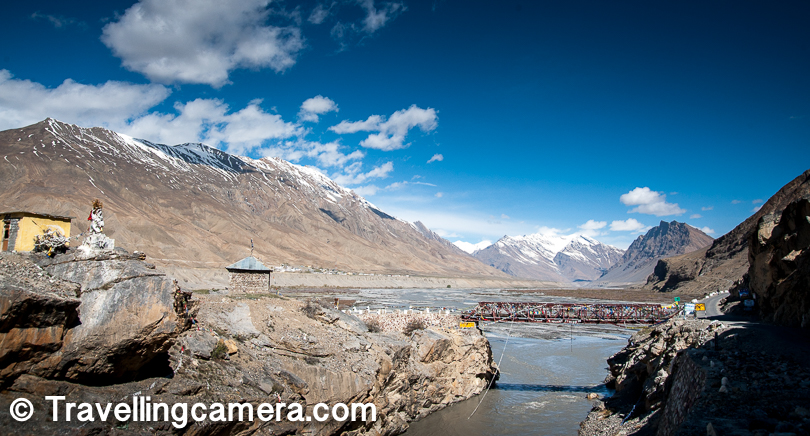
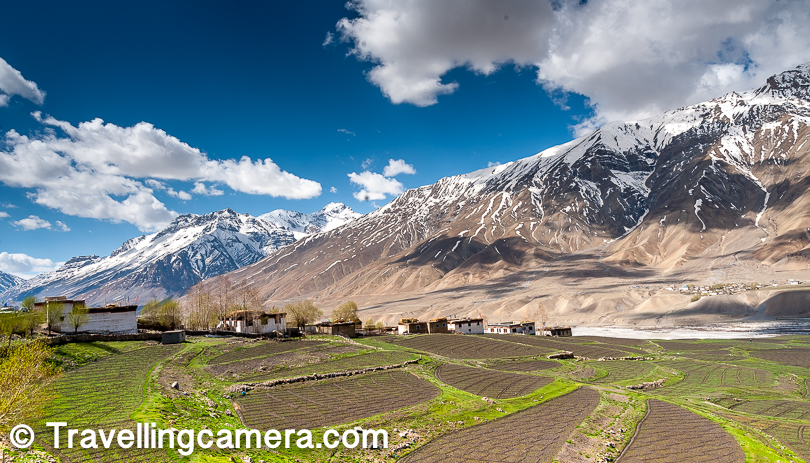


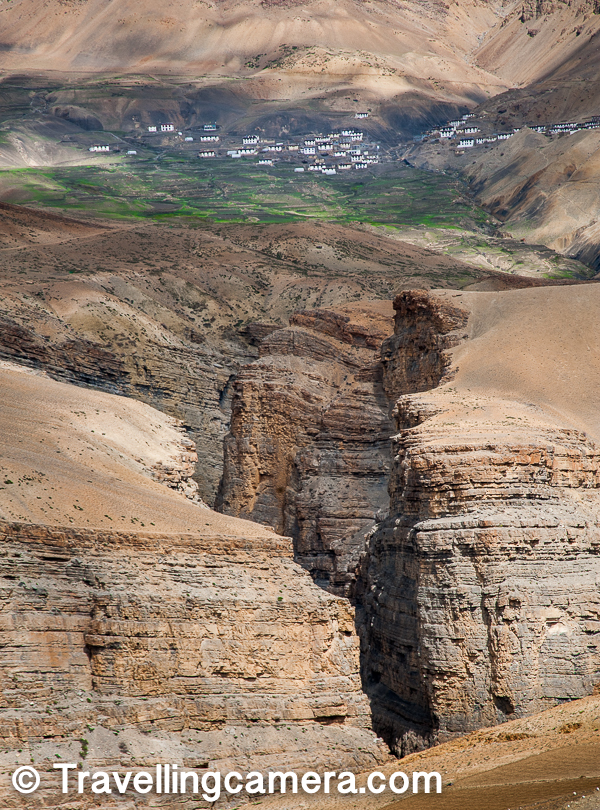


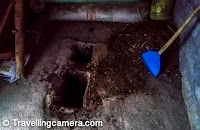

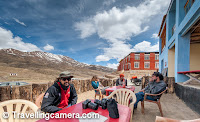
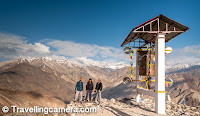



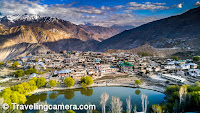

.jpg)
Comments